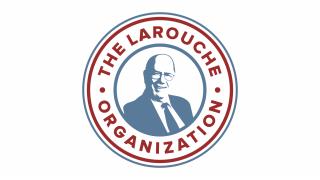Sept. 14—After addressing the Eastern Economic Forum in Vladivostok on Sept. 12, and after fielding questions for almost three hours, Russian President Vladimir Putin was asked in conclusion, what was the future of Russia? Without blinking, he spoke straight from his mind and heart: “We are the makers of our future.” He summarized a Sept. 8 discussion with some young nuclear scientists: “Scientists engage in R&D. Industrialists work in the sphere of material production, agriculture, in the industrial sector, etc. Cultural figures create images to preserve our values, which shape the inner life of every person and each citizen of Russia. All of this taken together will certainly yield a result. … This means that we will develop our own country and make it even stronger in cooperation with our partners and friends and in integration with the overwhelming majority of countries that represent most of the world population.”
Putin rapidly encapsulated what are really key points from Lyndon LaRouche’s “physical economy” approach. That is, scientific ideas drive R&D. (It really does start in creative human minds!) The products of that R&D are realized in production, the actual transformation of nature. And artists do something similar with the inner life of mankind, something beautiful, precious, and necessary; so that, among other things, the fertile ground is prepared for more scientific ideas. This latter is what Friedrich Schiller famously described as the “aesthetic education” of mankind—the key for preventing a great moment in history, tragically, finding a people too little.
The International Day of Peace is Thursday, September 21, and the UN General Assembly (UNGA) will gather. The Global Majority of nations has experienced a climate change, no longer willing to imbibe the sophistries of colonialism, Malthusianism, etc.—the idea that to get ahead, one must beggar his neighbor. The Wall Street Journal warned today that the opening of the UNGA is fraught with danger for Western officialdom. The recent period has found that the Global South is not interested in lining up against Russia, bowing down to the “Zelenskyy peace formula,” or wasting time. The WSJ: “It’s clear that the West overall has been surprised by the pretty widespread reluctance by many of the countries in the so-called Global South … to come on board.” There’s “animosity toward the U.S. and Europe” in some parts of the world and the desire of rising powers, such as Brazil and South Africa, to “assert their independence.” The clueless WSJ can’t explain these developments; rather, it is reduced to making the glum observation that, at the upcoming UN General Assembly meeting, non-Western participants are likely “to shift the global focus onto their priorities: global inequality and debt relief.”
Indeed, but those rising powers have gone places the WSJ doesn’t want to imagine. It is not about complaints over global inequality and debt relief; rather, it is about the solutions of advanced energy systems, clean water, massive transportation infrastructure, long-term development of their populations’ cultural and skill levels—and monetary and credit systems that have no other reason to exist than serve those ends.
Today’s weekly strategic dialogue with Helga Zepp-LaRouche, “Moving Forward After the BRICS & G20 Summits,” lays out the map for the next seven days, to make the International Day of Peace actually work to transform the nations of the world.






